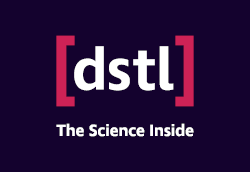
A safety-critical system or life-critical system is a system whose failure or malfunction may result in one of the following outcomes:
The Defence Evaluation and Research Agency (DERA) was a part of the UK Ministry of Defence (MoD) between 1995 and 2 July 2001. At the time it was the United Kingdom's largest science and technology organisation. It was regarded by its official history as 'a jewel in the crown' of both government and industry.
In the context of software engineering, software quality refers to two related but distinct notions:
Reliability engineering is a sub-discipline of systems engineering that emphasizes the ability of equipment to function without failure. Reliability describes the ability of a system or component to function under stated conditions for a specified period of time. Reliability is closely related to availability, which is typically described as the ability of a component or system to function at a specified moment or interval of time.
Integrated logistics support (ILS) is a technology in the system engineering to lower a product life cycle cost and decrease demand for logistics by the maintenance system optimization to ease the product support. Although originally developed for military purposes, it is also widely used in commercial customer service organisations.
In functional safety, safety integrity level (SIL) is defined as the relative level of risk-reduction provided by a safety instrumented function (SIF), i.e. the measurement of the performance required of the SIF.
Software assurance (SwA) is a critical process in software development that ensures the reliability, safety, and security of software products. It involves a variety of activities, including requirements analysis, design reviews, code inspections, testing, and formal verification. One crucial component of software assurance is secure coding practices, which follow industry-accepted standards and best practices, such as those outlined by the Software Engineering Institute (SEI) in their CERT Secure Coding Standards (SCS).
A hazard analysis is used as the first step in a process used to assess risk. The result of a hazard analysis is the identification of different types of hazards. A hazard is a potential condition and exists or not. It may, in single existence or in combination with other hazards and conditions, become an actual Functional Failure or Accident (Mishap). The way this exactly happens in one particular sequence is called a scenario. This scenario has a probability of occurrence. Often a system has many potential failure scenarios. It also is assigned a classification, based on the worst case severity of the end condition. Risk is the combination of probability and severity. Preliminary risk levels can be provided in the hazard analysis. The validation, more precise prediction (verification) and acceptance of risk is determined in the risk assessment (analysis). The main goal of both is to provide the best selection of means of controlling or eliminating the risk. The term is used in several engineering specialties, including avionics, food safety, occupational safety and health, process safety, reliability engineering.

The Defence Science and Technology Laboratory (Dstl) is an executive agency of the Ministry of Defence of the United Kingdom. Its stated purpose is "to maximise the impact of science and technology for the defence and security of the UK". The agency is headed by Paul Hollinshead as its chief executive, with the board being chaired by Adrian Belton. Ministerial responsibility lies with the Minister for Defence Procurement.
The British Ministry of Defence Architecture Framework (MODAF) was an architecture framework which defined a standardised way of conducting enterprise architecture, originally developed by the UK Ministry of Defence. It has since been replaced with the NATO Architecture Framework.

The Chartered Quality Institute (CQI), formerly known as the Institute of Quality Assurance (IQA), is the chartered body for quality professionals. It improves the performance of organizations by developing their capabilities in quality management. As a registered charity, the CQI exists to advance education in, knowledge of, and the practice of quality in industry, the public sector, and the voluntary sector.
The Central Computer and Telecommunications Agency (CCTA) was a UK government agency providing computer and telecoms support to government departments.
SOUP stands for software of unknownpedigree, and is a term often used in the context of safety-critical and safety-involved systems such as medical software. SOUP is software that has not been developed with a known software development process or methodology, or which has unknown or no safety-related properties.
The Motor Industry Software Reliability Association (MISRA) is an organization that produces guidelines for the software developed for electronic components used in the automotive industry. It is a collaboration between vehicle manufacturers, component suppliers and engineering consultancies. In 2021, the loose consortium restructured as The MISRA Consortium Limited.
The Centre for Software Reliability (CSR) is a distributed British organisation concerned with software reliability, including safety-critical issues. It consists of two sister organisations based at Newcastle University, UK. and City, University of London, London.

TRAK, or The Rail Architecture Framework, is a general enterprise architecture framework aimed at systems engineers. It is based on MODAF 1.2.
The UK Large-Scale Complex IT Systems (LSCITS) Initiative is a research and graduate education programme focusing on the problems of developing large-scale, complex IT systems. The initiative is funded by the EPSRC, with more than ten million pounds of funding awarded between 2006 and 2013.

Nexor Limited is a privately held company based in Nottingham, providing products and services to safeguard government, defence and critical national infrastructure computer systems. It was originally known as X-Tel Services Limited.
The United Kingdom has a diverse cyber security community, interconnected in a complex network.
The Trustworthy Software Foundation (TSFdn) is a UK not-for-profit organisation, with stated aim of improving software.




